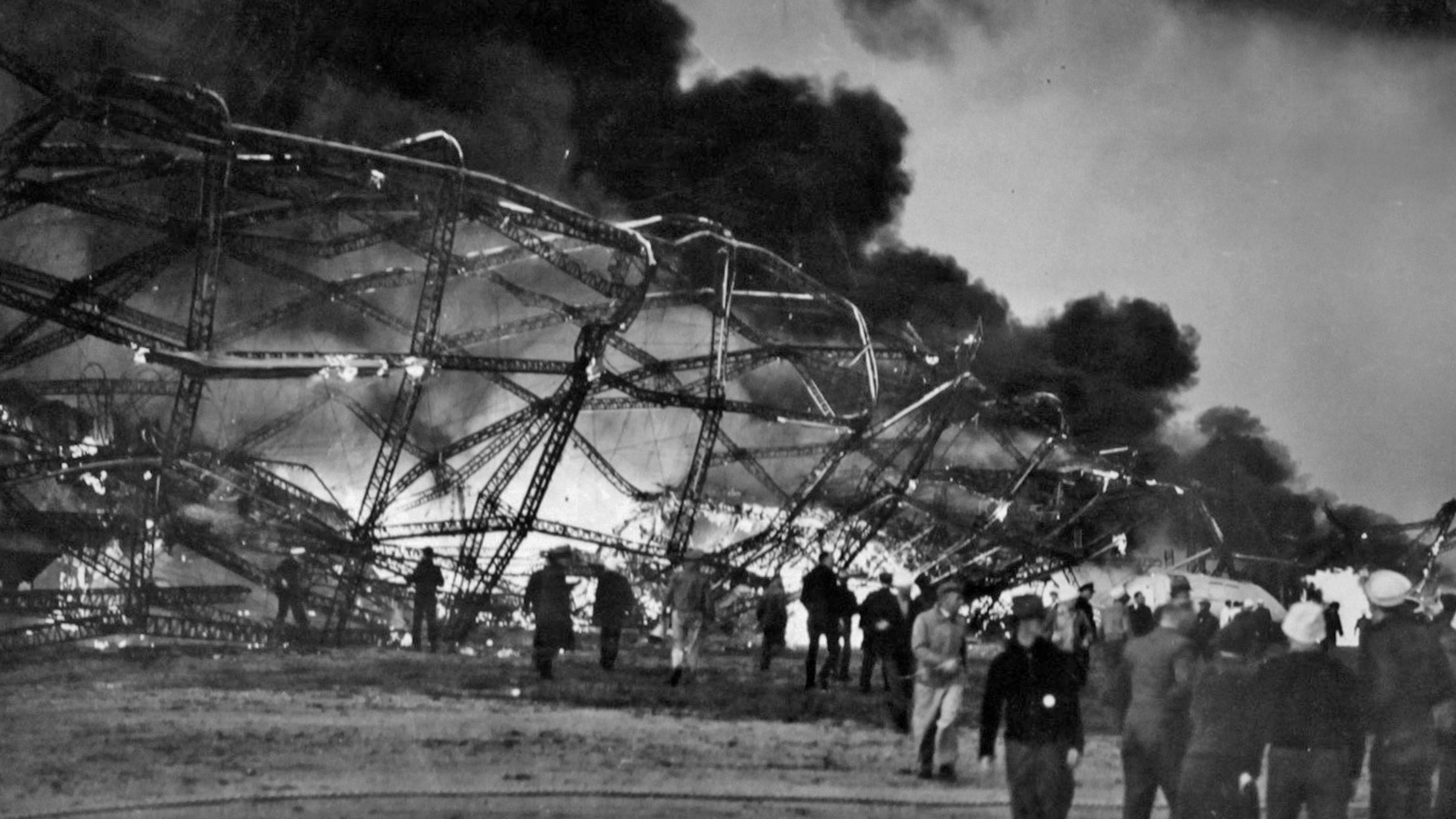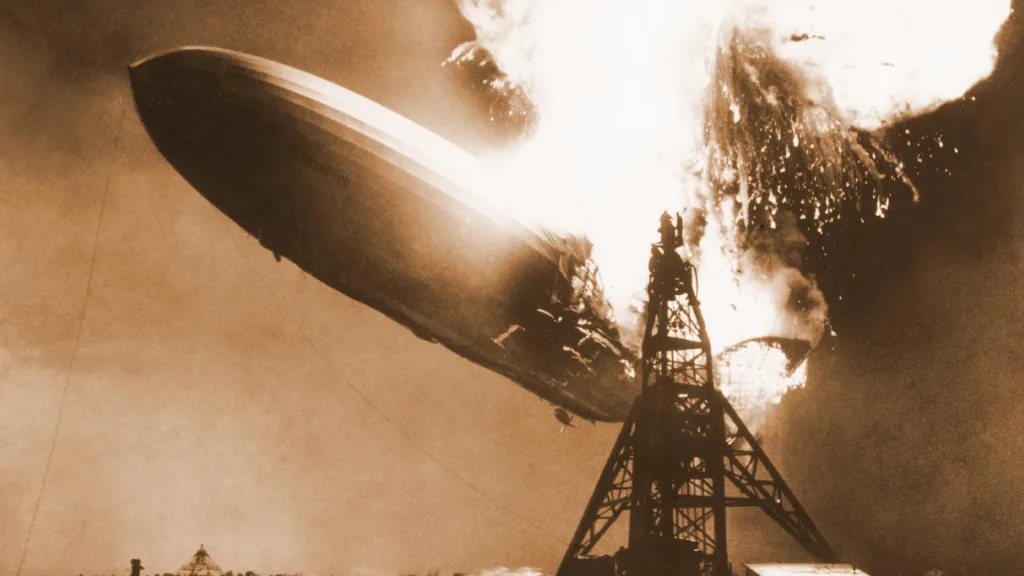The Hindenburg disaster, one of the most infamous incidents in aviation history, has long been shrouded in mystery and speculation. The massive airship, known for its luxurious accommodations and grandeur, met a tragic end on May 6, 1937, when it burst into flames during its attempt to dock at the Naval Air Station in Lakehurst, New Jersey. The explosion and subsequent fire claimed the lives of 36 people and marked the end of an era for airship travel.
For decades, experts and investigators have tried to unravel the mystery behind the Hindenburg disaster. Two separate reports, one from the United States and another from Germany, were conducted to determine the cause of the explosion. Both reports reached similar conclusions, attributing the disaster to a combination of factors involving static electricity and a leaking gas cell.
According to the findings, the Hindenburg had flown through a thunderstorm prior to the explosion. This thunderstorm created a highly charged atmosphere, with lightning and static electricity in the air. The airship, which was filled with highly flammable hydrogen gas, passed through these charged conditions, leading to a buildup of static electricity on its surface.
The reports suggest that a leaking gas cell allowed hydrogen from the airship to mix with oxygen from the outside air. This mixture, combined with the static electricity buildup, created a highly volatile environment. A spark, possibly from static electricity, ignited the hydrogen, resulting in the catastrophic fire that engulfed the Hindenburg.
While both reports agreed on the involvement of static electricity and a leaking gas cell, they differed in their explanations of the exact mechanism of ignition. The American report suggested an electrical phenomenon known as a “brush discharge” was the likely cause, while the German report mentioned the possibility of sparking from various sources.
Despite the thorough investigations and scientific explanations, some theories and speculations surrounding the Hindenburg disaster persist. The pilot of the airship, Captain Max Pruss, believed until his death that the explosion was the result of sabotage. However, the official reports and subsequent research have dismissed these claims, concluding that the disaster was indeed an unfortunate accident.
The Hindenburg disaster remains a significant event in aviation history, marking the end of the era of airship travel. The incident highlighted the dangers of using hydrogen gas as a lifting agent and led to the decline of airships as a viable mode of transportation. Today, the Hindenburg disaster serves as a reminder of the importance of safety measures and thorough investigations in the field of aviation.
What Was The Real Cause Of The Hindenburg Disaster?
The real cause of the Hindenburg disaster was determined by two separate reports, both of which reached the same conclusion. These reports indicated that a leaking gas cell allowed hydrogen from the airship to mix with oxygen from the outside air. This mixture of hydrogen and oxygen is highly flammable and can easily ignite when exposed to a spark or flame.
One possible source of ignition in the Hindenburg disaster was static electricity. It is believed that a spark, possibly caused by a buildup of static electricity, ignited the gas mixture, leading to the catastrophic fire that consumed the airship.
To summarize, the real cause of the Hindenburg disaster was the combination of a leaking gas cell, which allowed hydrogen and oxygen to mix, and a spark, likely from static electricity, that ignited the flammable gas. This conclusion was reached through thorough investigations and is supported by both reports.

What Caused The Hindenburg To Explode And Crash?
The Hindenburg disaster, which occurred on May 6, 1937, was a result of a catastrophic explosion and subsequent crash. The exact cause of the explosion has been a subject of debate and speculation over the years. However, experts have generally agreed that atmospheric conditions and a combination of factors played a significant role in the disaster.
One prevailing theory put forth by American investigators is that an electrical phenomenon called a “brush discharge” was responsible for igniting the leaking hydrogen gas, leading to the explosion. This theory suggests that the highly charged atmosphere on that rainy evening created conditions conducive to the formation of a brush discharge. This discharge, in turn, could have ignited the hydrogen gas that had leaked from the airship. The fast-moving fire resulting from the ignition rapidly engulfed the Hindenburg, causing it to crash.
On the other hand, German investigators had a slightly different perspective. They acknowledged the presence of leaking hydrogen as a contributing factor but attributed the ignition to a spark caused by static electricity discharge. According to their theory, the Hindenburg’s outer cover, made of highly flammable material, had accumulated static electricity due to the friction between the cover and the air. This static charge, combined with the leaking hydrogen, is believed to have caused the spark that ignited the fire.
While the exact mechanism leading to the explosion may still be a subject of debate, it is widely accepted that a combination of atmospheric conditions, leaking hydrogen, and an ignition source played a role in the Hindenburg disaster. The tragedy served as a significant turning point in the history of airship travel, leading to a decline in the use of hydrogen-filled airships and a shift towards safer alternatives.
Was The Hindenburg Disaster On Purpose?
According to investigations conducted by experts from two countries, the Hindenburg zeppelin disaster was determined to be an unfortunate accident rather than a deliberate act of sabotage. However, it is worth noting that the pilot of the airship, Captain Max Pruss, strongly believed until his death that the Hindenburg had been intentionally sabotaged.
Here are the key points regarding the investigation and the pilot’s belief:
Investigation findings:
1. Experts from two countries analyzed the evidence surrounding the Hindenburg disaster.
2. Following a thorough examination of the available information, the investigators concluded that the disaster was an accident rather than a deliberate act of sabotage.
3. The investigations primarily focused on factors such as the presence of flammable materials, the design and construction of the airship, weather conditions, and potential ignition sources.
Captain Max Pruss’s belief:
1. Captain Max Pruss was the pilot of the Hindenburg during its final flight on May 6, 1937.
2. Despite the investigation findings, Captain Pruss firmly maintained that the Hindenburg had been sabotaged.
3. It is important to note that Captain Pruss’s belief was not supported by the investigation findings.
The investigations conducted by experts from two countries concluded that the Hindenburg zeppelin disaster was an unfortunate accident rather than a deliberate act of sabotage. However, the pilot of the airship, Captain Max Pruss, held a different belief, maintaining until his death that the disaster had been intentionally caused.
Did The Hydrogen Cause The Hindenburg Explosion?
According to a team of experts, the Daily Mail reported that the Hindenburg explosion was not solely caused by the hydrogen gas. The experts determined that the explosion was actually a result of a combination of factors. Firstly, static electricity played a significant role in igniting the hydrogen. Additionally, the dirigible had flown through a thunderstorm, which led to a buildup of hydrogen. So, while hydrogen was present and contributed to the explosion, it was not the sole cause. The experts concluded that the combination of static electricity and the atmospheric conditions in the thunderstorm were the primary factors behind the Hindenburg disaster.

Conclusion
The Hindenburg disaster was determined to be the result of a combination of factors, primarily static electricity and a buildup of hydrogen gas. Two separate investigations, one by American experts and another by international investigators, reached similar conclusions about the cause of the explosion.
Both reports agreed that a leaking gas cell allowed hydrogen from the airship to mix with oxygen from the outside air. This mixture, combined with the presence of static electricity, created a highly volatile environment. The exact mechanism of ignition differed slightly between the two investigations, with the Americans suggesting an electrical phenomenon called a “brush discharge” as the most likely cause.
Furthermore, atmospheric conditions on the rainy evening of the disaster were found to have played a significant role. The presence of a thunderstorm likely contributed to the buildup of static electricity, increasing the chances of a spark. These conditions, combined with the leaking hydrogen, created a perfect storm for disaster.
While the investigations concluded that the Hindenburg disaster was an unfortunate accident, it is worth noting that the pilot of the airship maintained that it had been sabotaged. However, the evidence uncovered by the investigations did not support this claim, and no foul play was found to have contributed to the tragedy.
The Hindenburg disaster serves as a stark reminder of the dangers associated with airship travel and the importance of proper safety measures. The incident highlighted the need for stricter regulations and improved technology in the aviation industry, leading to advancements that have greatly enhanced the safety of air travel in subsequent years.
